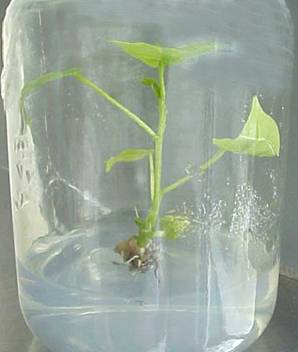Biotechnology - An Introduction
“Any technological application that uses biological systems, living organisms, or derivatives thereof, to make or modify products or processes for specific use”. Biotechnology is the practice of using plants, animals and micro-organisms such as bacteria, as well as biological processes - such as the ripening of fruit or the bacteria that break down compost - to some benefit to human.
Historically the term, biotechnology, was primarily used in the food processing and agriculture industries. Some of the techniques involved in biotechnology are ancient. For example, fermentation, in which microbes are used, has been practiced for thousands of years to produce beer, wine, cheese, bread and yoghurt. With the advent of recombinant DNA technology, the Western scientific establishment used this tern to refer to laboratory-based techniques being developed in biological research, such as recombinant DNA or tissue culture-based processes, or gene transfer in living plants, using vectors such as the Agrobacterium bacteria to transfer DNA into a host organism.
According to the Cartagene protocol on biosafety, the "Modern biotechnology" means the application of:
- In vitro nucleic acid techniques, including recombinant deoxyribonucleic acid (DNA) and direct injection of nucleic acid into cells or organelles, or
- Fusion of cells beyond the taxonomic family, that overcome natural physiological reproductive or recombination barriers and that are not techniques used in traditional breeding and selection.
Modern biotechnology was the result of the discovery of the structure of DNA by Watson and Crick more than decades ago. All living things including plants and animals contain DNA which is the genetic information that makes us how we are. The discovery of the structure of DNA revealed how characteristics, such as the colour of our skin and some diseases, are inherited from one generation to another. This discovery led to an explosion of research on genetics - plant and animals - and the development of many new technologies, including modern biotechnology.

Applications of Biotechnology
The major uses of modern biotechnology include:
- Development of plant and animal products with enhanced quantity and quality – Agricultural Biotechnology
- Development of improved medicines (such as antibiotics and recombinant vaccines) – Medical biotechnology
- Bioremediation to clean up soil and water – Environmental Biotechnology
- Production of useful industrial products – Industrial Biotechnology
Agricultural Biotechnology
For majority of Indian population, farming is the major source of income and livelihood. Though the agricultural production has increased significantly over the years, still the yield levels of Indian farms are far below world average. One of the major reasons attributed to this phenomenon is that the majority of the land is under subsistence farming. Under these circumstances, one of the strategies to improving yield level could be developing crop varieties suitable to subsistence farming as intensive farming may not be possible. The major objective for such a strategy would be to develop crop varieties that can grow well with limited water. Another important objective would be to impart resistance to pest and diseases so that the yield loss is minimized. Conventional crop improvement programmes have made significant contributions in developing cultivars suitable with biotic and abiotic stress resistance. However, their efforts are limited due to non-availability of germplasm or breakdown of resistance. Crop genetic engineering or marker assisted breeding as a part of crop breeding programme can overcome these limitations. |
.png)
.png)